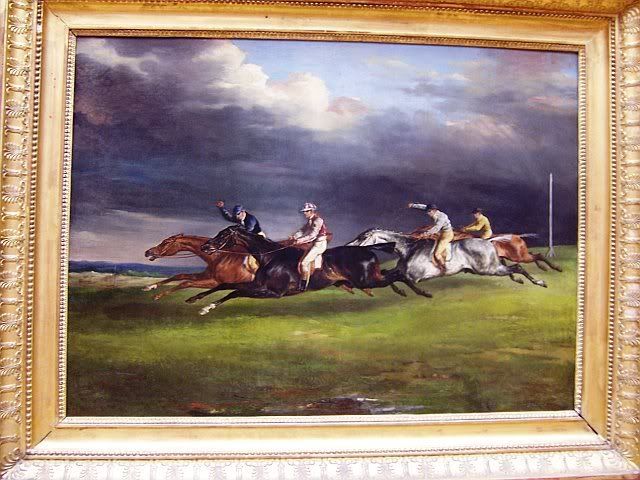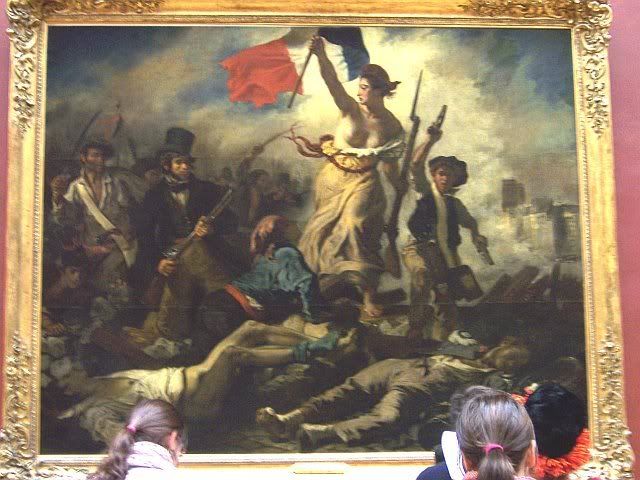Re: english saddles
Check out stuartlilliesaddles.com
Mainly a 18th century saddler, Probably the only one who could produce a accurate quality mid 19th century saddle. Very high quality work.
Todd Kern
Announcement
Collapse
No announcement yet.
english saddles
Collapse
X
-
Re: english saddles
Lester,
You know, your right about the use of the over-girths. The three racing saddles found in my 1883 D. Mason & Son catalog all have over girths (as do all of the polo saddles). See below. I agree about the lack of over girth (surcingle) but it still kinda resembles a racing saddle to me. Maybe Mr Babcock did not have his this day?
I also note in the D Mason catalog that the racing saddles appear to come in various sizes and while they have different flap (skirt) patterns all three angle forward more like modern English saddles (which obviates the racing style of riding at the time) but unlike Mr Babcock’s saddle the skirts are long. Also notice the gullet at the withers. Very flat- much like our Mr Babcock’s. Hmmmmmm...still, I don’t know. I am not much of an English saddle kinda guy.
As a period reference piece the D Mason catalog is incredibly educational. It includes over130 different English saddles including racing, exercise, Gentlemen’s riding saddles (with and without knee pad variations and moveable pannels), Gtlmen’s “large seated” riding saddles, Gtlmen’s pony saddles, traveling saddles, fancy saddles, pony riding saddles, ladies riding saddles (side saddles) and children’s saddles. The variations of saddle skirts are tremendous- long, short, narrow, wide, large, small, with and without knee pads, etc. This would likely hold true for “American-made” English saddles of the day too. I enclose a couple of saddles for observation. The more I look at this catalog the more I see similarities to many modern English saddles. Truly, some things have changed but little.
Enjoyed visiting with you at Manassas a couple of years ago! By the way, how is my “x” 1856 UP? I trust you are giving it the TLC it deserves? A friend of mine recently purchased a nearly identical one made by Middlemore. It also has the same 1860 dates but also the original spoon cantle intact! I have yet to see it. Rare birds those 56 UP’s.
Ken R Knopp
Leave a comment:
-
Re: english saddles
Ken,
I had thought about a racing saddle too, but it really is up in the air. Its definitely flat enough, however the skirts IMO aren't too short. They still extend past the edge of that saddle cloth. I don't think the skirts of racing saddles were too short back in the day. Also, note the lack of an overgirth. While standard as part of today's racing saddle tack, I don't believe it was uncommon during the 19th century to use one as well. For example:
Check out this photo I took of Eugene Delacroix's "Race" at the Louvre in Paris. Now he lived from 1798-1863. Not sure if the setting was in France or England, which he spent plenty of time in both, but note the jockey's in silks all riding with a longer stirrup of the period and quite long saddle skirts. If you pay particular attention the jockey closest to viewer in the crimson and white silks on the dark bay, you'll notice a white strap coming up from under the horse and continuing behind the riders leg over the saddle. Not evident on the others, but I'd be willing to guess at least he is using an overgirth. How's that for long skirts!!

He was one of the early Romantics and greatly influenced the Impressionists who were later to come. Now Delacroix spent plenty of time in the country so its hard to truly nail down. My guess is sometime possibly after 1825 when he was in England and before 1832, when he went to Morocco after painting La Revolution in 1830. It could have also been later in life as he lived in the French countryside as well as in Paris.

Leave a comment:
-
Re: english saddles
Great post! The old 2004 thread was great to see. I do not remember it but many thanks for posting it. Great photos! I ask and wonder if Mr Babcock’s saddle noted in that thread might simply be a “racing” saddle? I note its short skirts, low pommel, cantle and short bars that more typical of racing saddles of the period than the common English “riding” saddles.
I have always been amazed that 19th century English “Gentlemen’s Riding” saddles are very similar to what we have today. While they too had many, many variations differentiated by style choices, embellishments and intended use (polo, pony, riding, racing, etc.) the similarities are really more striking.
I have a copy of D. Mason & Son’s (Wallsall/Birmingham England) 1883 catalog which contains detailed drawings of over 100 saddles (among many other things). The variances are amazing but so is the commonality to today’s English saddles. I also have several photos of mounted British troops from the Crimean War and enclose two photos of saddles that were commonly used by the troops in that war and, I might add could nearly be dropped on a horse today with little notice.
The adaption of the forward seat changed a lot in English saddlery. The primary but not major differences being the angle of the skirts (not always), more narrow gullett and sometimes the position of the stirrup hangers. No modern English saddles could double as period pieces (the “Dressage” comes closer but the materials used are wrong too) however, many that were made in the early 20th century (and are still around) could easily do so. I hesitate to say this but more reeanctors could/should use English pattern saddles in their impressions. They are very appropriate if done under the right circumstances.
Ken R Knopp
Leave a comment:
-
Re: english saddles
Please see the thread I started some time ago discussing the photo of John Babcock. The details of this photo are amazing and include what you are asking about, a period english saddle. Other than some variances in design, length of skirts, actual height of cantle, etc., a saddle of this type was in widespread use as its basic pattern had been around for close to a century by this time.
Definitely seperate from working saddles of the "texas" or "spanish" type. Not sure what Doug Kidd calls a "plantation" saddle, but the english saddle is cartainly not a working muley-type either.
Built for pleasure and sport and pressed into military service, when needed.
Hank Trent is also correct regarding the "classic" vs. "forward" seat, which transitioned into the 20th century and played a part in skirt design and legth through the years. There are archived threads here regarding that discussion as well.
http://www.authentic-campaigner.com/...ead.php?t=5183
Leave a comment:
-
Re: english saddles
the discussion we had was about actual "english" saddles, or as some people referred to them "european saddles'.
Hank that is a good point about the "forward seat" and such, had seen references to that but sort of over looked it. I'll look at that again
Leave a comment:
-
Re: english saddles
Greetings:
Are you looking for a real English saddle design, ca. 1850, or for a civilian "plantation" saddle such as the repro Doug Kidd produces?
Andrew German
Leave a comment:
-
Re: english saddles
Can't be of much help really, but here's one factoid.Originally posted by csabugler View PostNot having much luck with searches, Trying to find comparison of modern and period English saddles for civilian impressions. Any body know of the differences in construction, rigging , etc? We all know about the period v/s 1872 and 1904 mac's,etc., but what about English?
Around the first half of the 20th century, English riding for hunters and jumpers switched to the "forward seat," and the balance of the tree was adjusted accordingly. For a period saddle you need a tree where it's easy for the ankles to be slightly ahead of the hips, as seen in period images, not something that the average English hunt saddle today is balanced for. Don't know how the balance of modern walking horse saddles and other non-hunt-seat saddles compares.
Hank Trent
hanktrent@voyager.net
Leave a comment:
-
english saddles
Not having much luck with searches, Trying to find comparison of modern and period English saddles for civilian impressions. Any body know of the differences in construction, rigging , etc? We all know about the period v/s 1872 and 1904 mac's,etc., but what about English?Tags: None


Leave a comment: